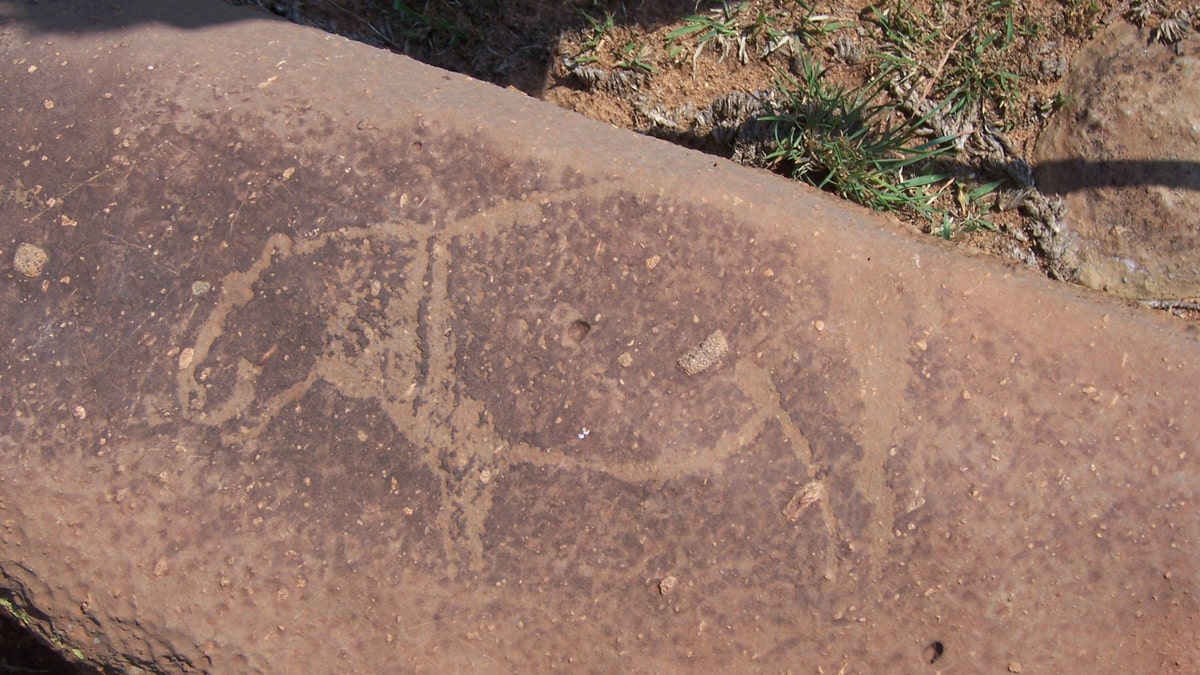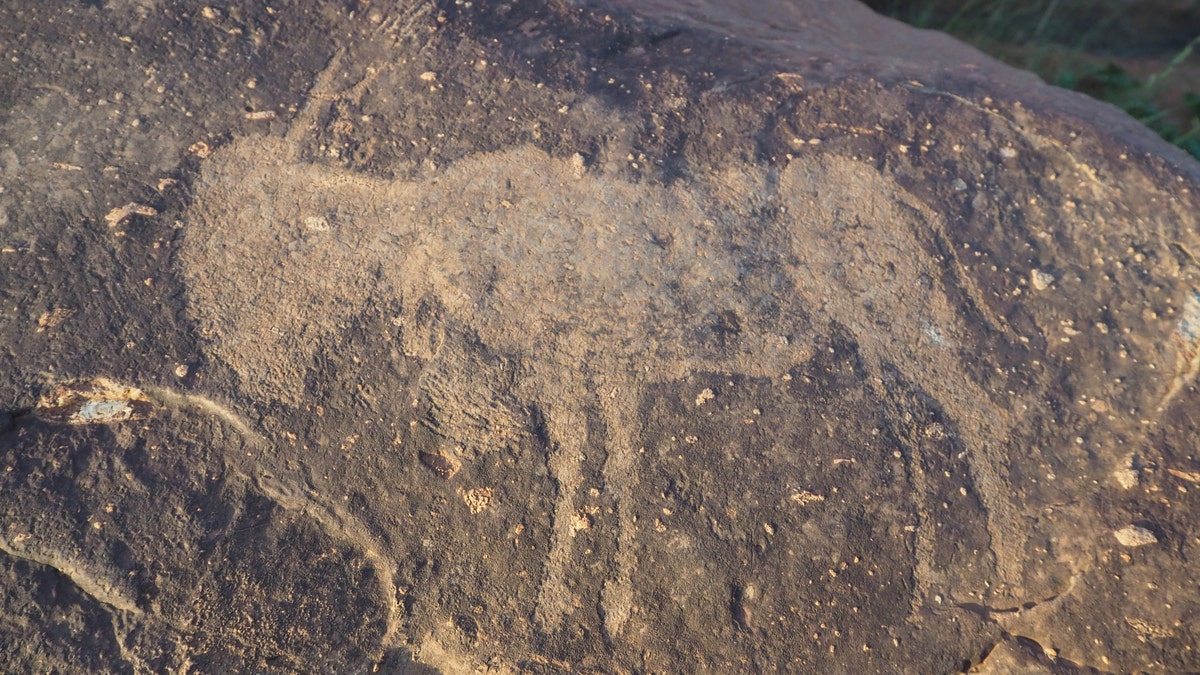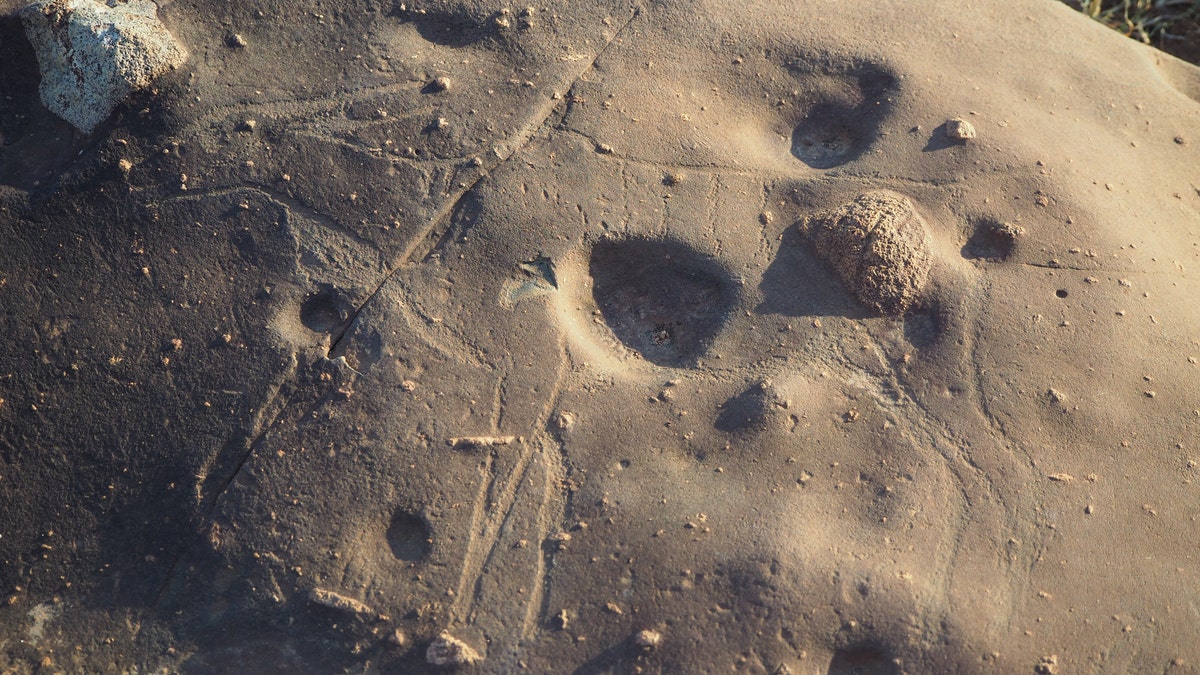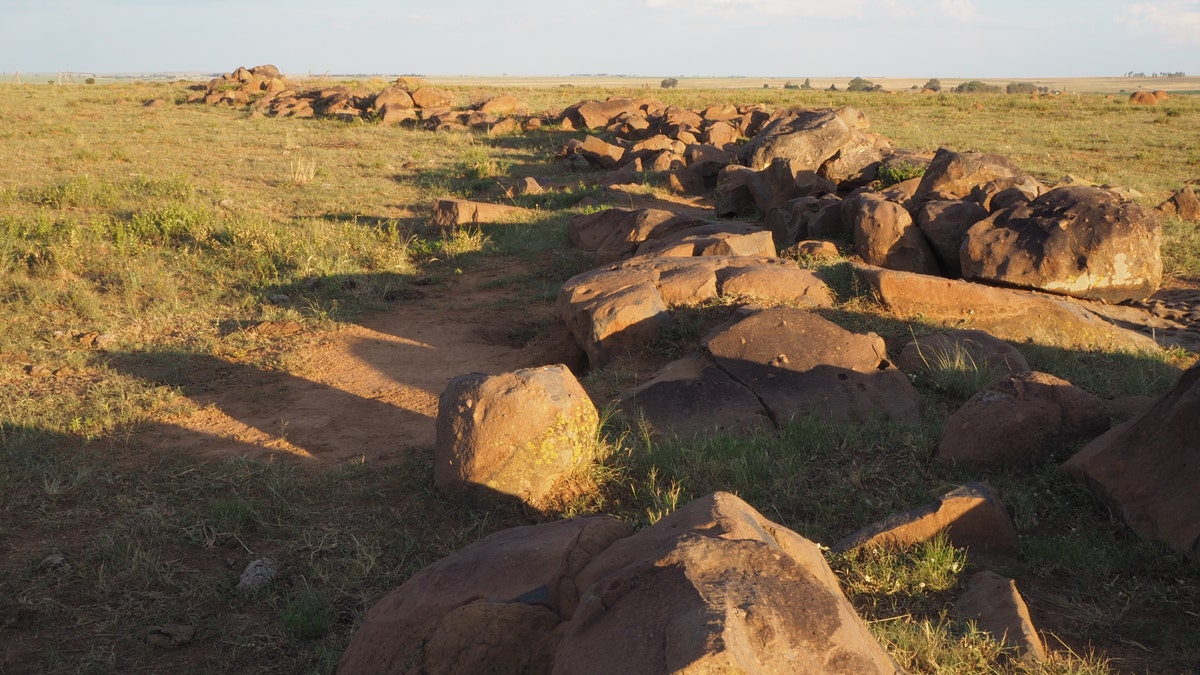Fox News Flash top headlines for June 18
Fox News Flash top headlines for June 18 are here. Check out what's clicking on Foxnews.com
Experts have revealed details of the mysterious 8,000-year-old rock carvings found in the world’s largest asteroid crater.
The petroglyphs were found in the Vredefort impact structure, a 186-mile wide crater in South Africa that was formed by an asteroid strike around 2 billion years ago.
The crater, which is in the country's Free State Province, has been known for over 100 years, according to Dr. Matthew Huber, senior lecturer in economic geology at the University of the Free State. Located in the middle of the Witwatersrand goldfields, the structure has been thought to be an impact crater since 1961, he told Fox News via email.
STONE BLOCK WITH MYSTERIOUS 12,000-YEAR-OLD ENGRAVINGS DISCOVERED AT PREHISTORIC HUNTING SITE
“What is most interesting scientifically in the impact structure are the so-called ‘Granophyre Dikes’,” he added. “These are long, narrow features that can be 10 kilometers [6.2 miles] long and 5 meters [16.4 feet] wide. They are made of a brown-grey rock that is full of fragments of various other rocks inside of it. The previous work on the dikes established firmly that they formed because of the impact.”

A rock carving of a hippo discovered at the site of the asteroid impact. (Dr. Matthew S. Huber)
A research paper on the site has been published in the journal Geology by experts from the University of the Free State, the University of Vienna and the Zavaritsky Institute of Geology and Geochemistry in Russia.
Scientists know that the dikes were formed from molten material from the asteroid impact, and are now trying to work out how this material moved from the surface to the depths of the crater.
12,000-YEAR-OLD CAVE ART FROM THE ICE AGE FOUND
The site also has a huge significance in the study of prehistoric cultures. Huber explained that the area around the dikes is littered with artifacts and carvings from the Khoi-San indigenous people of Southern Africa. “Obviously, they also recognized the significance of the site. What is amazing is that the same dikes that we recognize to have the most geological significance also had the most spiritual significance for these early inhabitants.”

One of the rock carvings discovered at the Vredefort impact structure. (Dr. Matthew S. Huber)
There are multiple “generations” of carvings at the site, spanning from 8,000 years ago to as recently as 500 years ago. “The dike was almost certainly used as a rain-making site, and we know this because of the petroglyphs that are there,” said Huber. “The art styles changed through time, and some carvings have been altered (i.e., changing the head of an animal to a different animal). However, what remains constant at the site is the connection to rainmaking.”
The carvings appear to include depictions of hippos, rhinos, antelopes and horses. The shape of the dike is also similar to the “Rain Snake,” according to Huber.
40,000-YEAR-OLD ANIMAL DRAWING DISCOVERED IN REMOTE BORNEO CAVE
The geologist told Fox News that he first visited Vredefort in 2010. “The carvings are relatively well known in the planetary science community, and certainly by all of the geologists who have studied Vredefort in detail, but we were surprised to learn that the carvings were not in the Free State archaeological registry,” he explained. “Once we learned that the archaeological and anthropological communities did not know about the site, we immediately began to seek out assistance in studying these features further.”

A rock carving of an antelope discovered at the site. (Dr. Matthew S. Huber)
More work is planned at the site, which includes making a 3D model of the dikes and collecting geophysical data of the rocks around and below the features. “We will be collecting samples of the dikes and the fragments contained with the dikes in order to study their chemistry, and we will make microscope slides to study in the laboratory when we get back to the university,” said Huber. “In addition to this, we will also be visiting some new sites that we have never been to before, and we don't know what we will discover!”
Other prehistoric sites have been revealing their secrets. Archaeologists in France, for example, recently uncovered a mysterious carved stone block at a prehistoric hunting site.
LOST CITY IN SOUTH AFRICA REVEALED IN STUNNING DIGITAL IMAGES

The "Granophyre dike" (Dr. Elizaveta Kovaleva)
The stone was found during excavations at Angouleme in southwestern France. A number of engravings have been carved into the sandstone, including horses, deer and an aurochs, an extinct species of wild cattle.

This image of the "Granophyre Dike" was generated by Dr. Martin Clark using imagery from the National Geospatial Information (NGI) and the Department of Rural Land Development and Land Reform (DRDLR) of South Africa (Dr. Martin Clark/NGI/DRDLR)
Last year, 12,000-year-old art was found in a cave in eastern France. The drawings had been hidden under graffiti for centuries.
CLICK HERE TO GET THE FOX NEWS APP
Fox News’ Chris Ciaccia contributed to this article. Follow James Rogers on Twitter @jamesjrogers





















